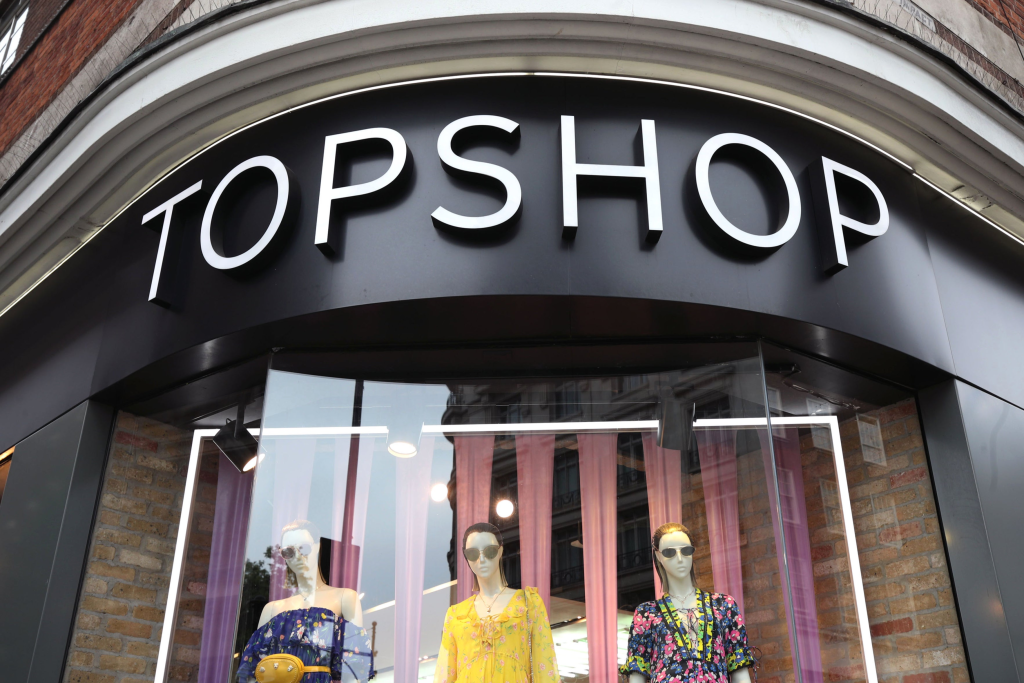Topshop’s return to the high street marks an exciting chapter in UK fashion retail, as the iconic brand relaunches under new partnerships facilitated by its owner, Asos. After navigating a challenging retail landscape, Asos has pivoted to revitalize Topshop by aligning with various retail partners to bring its apparel back into physical stores. The online fashion retailer’s commitment is underscored by plans for a standalone Topshop.com website, further enhancing its digital presence. Despite recent sales declines attributed to fierce competition from rivals like Shein, the brand’s revival aims to reestablish its place in the bustling high street scene. Asos’s strategy to reclaim Topshop highlights its resilience and dedication to delivering value, setting a promising stage for the brand’s resurgence in the retail environment.
The resurgence of Topshop in physical retail spaces signifies a significant shift in the landscape of UK fashion. With strategic collaborations at the forefront, Asos is effectively maneuvering to offer Topshop products through various retail outlets, enhancing its offerings in a competitive market. This transformation is not merely a return to form but also a pivot that aligns with current consumer needs and shopping behaviors. Furthermore, the development of a dedicated Topshop online platform emphasizes the blend of digital and brick-and-mortar strategies to engage customers effectively. As Asos charts this new territory, it reinforces the brand’s legacy while adapting to the evolving dynamics of fashion retail.
Topshop Returns to High Street: A New Era in Retail
Topshop’s return to the high street marks a significant moment for UK fashion retail, as the brand partners with various retailers to reconnect with consumers. As Asos, the owner of Topshop, embraces collaborations, it hints at a strategic move aimed at revitalizing the brand’s presence in physical retail locations. This shift not only aims to enhance brand visibility but also to tap into the resurging demand for in-person shopping experiences post-pandemic. By leveraging existing retail partnerships, Topshop hopes to establish a stronger foothold in an increasingly competitive market.
The CEO of Asos, José Antonio Ramos Calamonte, emphasized the importance of this physical presence, stating that it will help Topshop resonate more with UK consumers. With many traditional retailers vying for attention, the relaunch strategy is carefully designed to attract both loyal customers and new shoppers. As the fashion industry evolves, Topshop’s initiatives demonstrate an acute awareness of changing consumer preferences and market dynamics, paving the way for the brand’s successful re-entry into the high street.
Leveraging Partnerships for Fashion Growth
The strategic partnerships formed by Topshop are crucial for its successful return to the high street. By collaborating with established retailers, Asos can minimize risks and enhance distribution channels, which is vital in today’s fast-paced fashion landscape. These types of synergies not only allow Topshop to reach a wider audience but also enable them to stay relevant amidst fierce competition from online fashion retailers like Shein and Temu. Asso’s approach demonstrates a commitment to creating value through collaboration, ensuring a robust platform for the recently relaunched brand.
Furthermore, these partnerships can enhance customer engagement by providing diverse shopping experiences that cater to different consumer preferences. With a focus on both physical stores and online platforms, Topshop’s strategy aims to blend convenience with a personalized shopping experience. Asos’s ability to adapt to market conditions while leveraging its brand equity will be instrumental in ensuring Topshop’s successful integration back into the high street fashion scene.
The Importance of a Standalone Topshop Website
A standalone Topshop.com website is a pivotal element in the brand’s transition back to its roots. This dedicated platform will not only serve as a comprehensive catalog of Topshop’s offerings but also enable the brand to communicate directly with its customers. By creating a unique digital identity, Topshop can foster stronger customer relationships and facilitate a seamless shopping experience, encouraging repeat visits and purchases. In the competitive landscape of UK fashion retail, having a direct online presence is essential for driving sales and enhancing brand loyalty.
Moreover, the launch of a dedicated website signals Topshop’s commitment to quality and consumer engagement amidst changing market dynamics. As the retail environment becomes increasingly digital, ensuring that the Topshop online experience is smooth and user-friendly will be vital. With a focus on delivering exceptional value, Topshop can effectively position itself as a leading choice for consumers looking for trendy, high-quality apparel without compromising on customer service.
Adapting to Volatile Market Conditions
Asos’s strategic foresight is evident in how it plans to navigate the volatile market conditions facing fashion retailers today. The company has recognized the need for agility, particularly in light of recent challenges such as fluctuating tariffs and shifting consumer behaviors. Calamonte’s assurances that Asos is prepared to adapt, regardless of the regulatory landscape, reflect a proactive approach designed to mitigate risks while optimizing opportunities for growth. This adaptability is crucial for sustaining business in a market that is rapidly evolving due to economic factors.
By preparing for potential changes in tax regulations and tariffs, Asos can maintain competitive pricing and attract consumers who are increasingly price-sensitive. The ability to leverage diverse sourcing strategies—and prioritize products from various regions—enables Topshop to remain nimble in a challenging retail climate. This strategic flexibility not only helps in managing costs but also ensures that the brand can continue to deliver quality products in line with consumer expectations.
The Future of Topshop in Competitive UK Fashion Retail
The future of Topshop hinges on its ability to innovate and carve out a unique niche within the competitive landscape of UK fashion retail. As Calamonte pointed out, while competition is intensifying, Topshop has growth opportunities worth exploring. The brand’s ability to appeal to both its loyal customer base and new audiences through effective marketing strategies will be key to securing a robust market position. By focusing on current fashion trends and consumer needs, Topshop can reestablish itself as a top choice for stylish apparel.
Additionally, the emphasis on collaboration with various retail partners and the future potential of a standalone online presence bodes well for Topshop’s resurgence. By remaining cognizant of market trends and customer preferences, Asos can enhance Topshop’s value proposition and foster a lasting connection with consumers. Thus, the future looks promising if Topshop remains committed to embracing innovation and strategic partnerships in the ever-evolving fashion landscape.
Topshop’s Focus on Consumer Value
Topshop’s resurgence is not solely about increasing sales; it emphasizes delivering genuine value to customers. This focus is evident in Asos’s strategy to offer quality products that align with consumer needs during uncertain economic times. In a landscape where fast fashion is often scrutinized for its sustainability implications, Topshop aims to balance trendy offerings with a commitment to ethical production processes, positioning itself as a brand that cares about consumers and the environment.
Understanding that consumers are becoming more discerning about where they shop, Topshop’s approach to value encompasses not just price but also product quality and overall customer experience. By fostering trust and transparency, the brand seeks to build long-term loyalty among its customer base. In a saturated market, providing exceptional value is essential for distinguishing Topshop from competitors and ensuring ongoing relevance in the fashion industry.
Aggressive Expansion Strategy for Topshop
To regain and strengthen its market share, Topshop is embarking on an aggressive expansion strategy through partnerships and collaborations with established retailers. This strategy serves as a vital mechanism for building presence and visibility without the heavy financial burden of establishing standalone stores. This calculated approach allows Topshop to test various markets and gather insights on consumer behavior, which will inform future decisions for physical or online growth initiatives.
Asos’s strategic partnership alignments indicate a broader trend within the fashion retail sector where flexibility and adaptability are key. With online sales growth remaining a priority, Topshop’s retail collaborations can efficiently bridge the gap between physical and online shopping experiences, catering to a diverse consumer base. Such an expansive yet strategic approach caters to both the growing demands for physical stores and online convenience, crucial for the brand’s future success.
Responding to Tariff Challenges in the Market
Asos’s awareness of the challenges posed by tariffs and import regulations underscores the complexities of operating in today’s global fashion market. The anticipated changes regarding tax exemptions and tariffs on products sourced from China prompt the necessity for Asos to refine its supply chain strategies and optimize pricing models. By sourcing products from a variety of regions, Asos can mitigate the impact of increased tariffs and ensure that Topshop remains competitive in pricing—all while providing quality apparel to its consumers.
Additionally, the proactive stance taken by Calamonte emphasizes a commitment to maintaining price stability for consumers. Rather than reactive price increases, Asos aims to absorb costs where feasible while still delivering high-quality products. This approach fosters customer trust, which is critical in an era where fashion consumers are increasingly price-conscious yet discerning about quality. By addressing potential tariff issues head-on, Topshop can continue to thrive amidst economic volatility.
Navigating Online Fashion Retail Trends
Topshop’s emphasis on online retail highlights the inherent trends shaping the modern fashion industry. As digital shopping becomes the preferred mode for consumers, establishing a strong online presence is non-negotiable. The planned launch of a standalone Topshop.com site exemplifies the importance of adapting to these consumer behaviors while offering a tailored shopping experience. This online store will serve as a vital channel through which the brand can engage with customers, providing them with the latest trends and seamless purchasing capabilities.
Moreover, as competitors like Shein and Temu continue to innovate within e-commerce, Topshop’s ability to capitalize on digital retail trends will be paramount for its relevance. From leveraging data analytics to personalized marketing strategies, Topshop will need to implement tools that enhance customer experience and drive traffic to its online platform. Navigating these online fashion retail trends effectively will play a crucial role in establishing Topshop as a reputable brand in a highly digitalized shopping environment.
Frequently Asked Questions
What is the timeline for the Topshop return to the high street?
Topshop’s return to the high street is set to occur through partnerships with various retailers. Although specific timelines for these in-store appearances have not been disclosed, Asos has announced a planned relaunch of a standalone Topshop.com website later this year.
How will Topshop partnerships affect its availability in the UK fashion retail market?
Topshop’s partnerships with other retailers aim to increase its presence in the UK fashion retail market. These collaborations will allow customers to find Topshop apparel at multiple locations, enhancing accessibility while the brand strengthens its online presence.
What role does Asos fashion strategy play in the Topshop relaunch?
Asos’s fashion strategy is integral to the Topshop relaunch, focusing on delivering value to consumers in a volatile retail environment. The strategy outlines securing partnerships and enhancing online sales through the forthcoming Topshop.com website.
Will Topshop have standalone stores after its high street return?
Currently, there are no immediate plans for Topshop to open standalone stores following its return to the high street. Asos has not ruled out the possibility for future expansions as the brand develops its identity.
How will the Topshop relaunch compete with other online fashion retailers?
The Topshop relaunch aims to compete with online fashion retailers by offering unique products and leveraging new partnerships to enhance distribution. As noted by Asos CEO, the focus will be on delivering quality and value amidst intense competition.
What challenges might affect the Topshop return to the high street?
The Topshop return to the high street may face challenges from rapidly changing tariffs and tax regulations, particularly impacting US sales. However, Asos is confident in their ability to adapt and deliver value, regardless of market fluctuations.
Is Topshop set to launch a dedicated online store, and how might this impact its high street return?
Yes, Topshop is planning to launch a dedicated online store, Topshop.com, which is expected to create a significant online presence. This digital strategy will support the high street return by driving online sales and brand awareness.
How are current market conditions affecting the Topshop relaunch?
Current market conditions are challenging, with competitive pressures leading to decreased sales for Asos. However, the focus on partnerships and a strong online strategy for Topshop is expected to counteract these challenges and positively impact its relaunch.
Why is the relaunch of Topshop significant for the UK fashion retail landscape?
The relaunch of Topshop is significant for the UK fashion retail landscape as it reinvigorates a well-known brand amidst increasing competition from brands like Shein and Temu. It highlights the ongoing evolution of UK fashion retail, emphasizing partnerships and online strategies.
What measures is Asos taking to ensure the success of the Topshop relaunch in the current market?
Asos is focusing on strategic partnerships, enhancing product quality, and adapting to market demands to ensure the success of the Topshop relaunch. The company is committed to delivering value and monitoring market conditions closely as they evolve.
| Key Point | Details |
|---|---|
| Topshop’s Return | Topshop will return to the high street through partnerships with other retailers. |
| Owner | Owned by Asos, which is navigating changing tariffs and tax regulations. |
| Relaunch Plans | A standalone Topshop.com website is set to launch later this year. |
| Sales Performance | Asos reported a 13% decline in sales amidst competition and changing market conditions. |
| Market Context | Decreased US sales attributed to market conditions and unprofitable sales cuts. |
| Tax Changes | Potential benefits from UK tax changes on imports could help sales. |
| Product Sourcing | Products are sourced from various regions, minimizing tariff impacts. |
| Competitive Strategy | Asos aims to deliver value rather than compete solely on price. |
Summary
Topshop’s return to the high street marks a significant step forward for the brand as it seeks to establish a stronger presence in the fashion market amid evolving retail challenges. With a strategic partnership model being implemented, Asos aims to navigate the complexities of tariffs and competitive pressures. The upcoming launch of a dedicated Topshop website will enhance customer accessibility and brand identity. As the retail landscape continues to transform, Topshop is poised to adapt and thrive by prioritizing product value and customer satisfaction.



